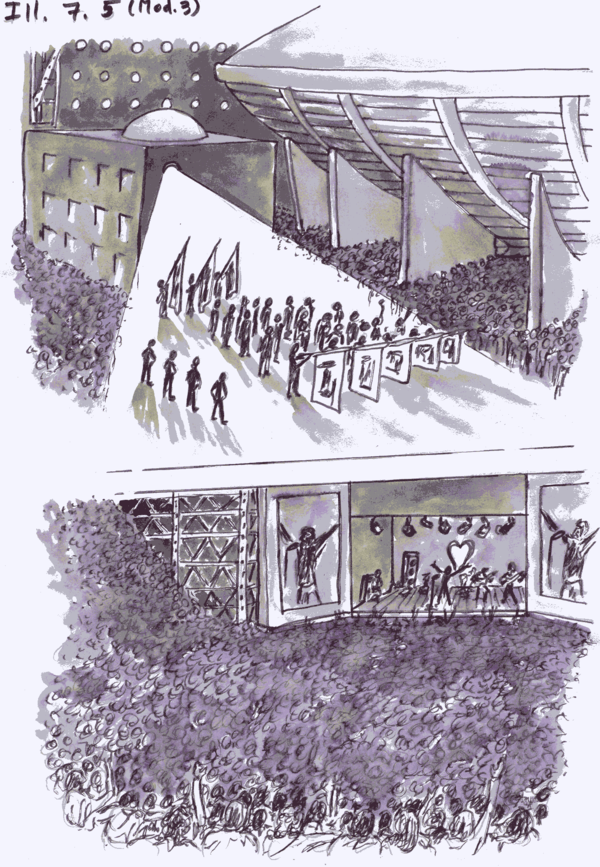| << Chapter < Page | Chapter >> Page > |
Drama
Research&Discussion:
Research Project
Research the opening ceremony of your choice, e.g. opening ceremony of the Olympic Games, a boxing match, a rugby match, a rock concert, opening of Parliament, etc.
Isolate the following dramatic elements :

If your class is very big, your educator will divide the class into groups.
Give an oral and visual presentation on this project.
Practical:
Work together with the rest of your class on an opening ceremony for the next Inter Schools sports event, be it athletics, soccer, rugby, etc.
This opening ceremony should include the following, if possible:
First plan and present a structure and production plan for the ceremony.
Refine and develop this pre-production plan with the help of your educator.
Put together the opening ceremony by acting out the process in the class.
Go to the sports field and rehearse and perform the ceremony.
South African artists and our cultural heritage
The values, beliefs, and traditions of a culture are reflected in its arts and passed down through generations. The arts are always evolving and changing with new influences from society and individual artists.
Examples of individuals in all four art forms who had a significant influence on the arts in South Africa:
Dance
Drama
Music
The Task:
Choose only one of the artists listed above. Research the artist and his/her style and gather data on the following:
Herewith guidelines to assist you with your research.
Research your chosen artist and gather information about him/her that can answer these questions:
Name and give a brief description of one of his/her art works.
Organise the information into a brief 5 minute oral presentation.
| Learning Outcomes(LOs) |
| LO 2 |
| REFLECTING The learner will be able to reflect critically and creatively on artistic and cultural processes, products and styles in past and present contexts. |
| Assessment Standards(ASs) |
| We know this when the learner: |
| COMPOSITE (2.1 – 2.2) |
| finds out about a South African artist of the past or present, from any form, and reports to the class; |
| explains the need for conservation of a country’s indigenous knowledge systems, heritage artefacts in museums, galleries, theatres, cultural sites and natural heritage sites; |
| DANCE (2.3 – 2.4) |
| researches a traditional dance in the community from people, books or videos and presents it to the class; |
| displays observation skills by describing components of dances in terms of movement style, purpose, and use of dances, costumes and music; |
| DRAMA (2.5) |
| recognises and identifies elements of drama (e.g. processions, charts) in forms of cultural and social expression over time (e.g. opening ceremonies, rock concerts, gladiators, state events, sport). |

Notification Switch
Would you like to follow the 'Arts and culture grade 7' conversation and receive update notifications?